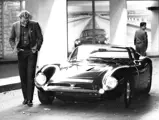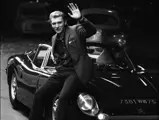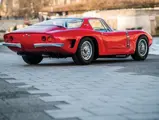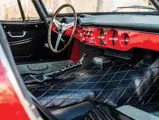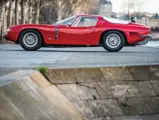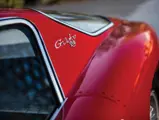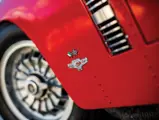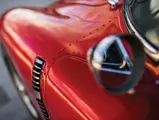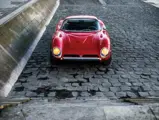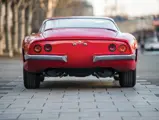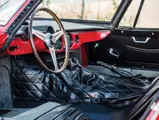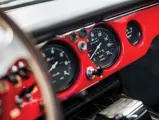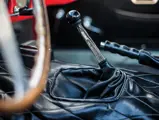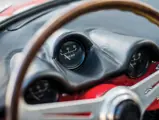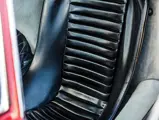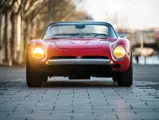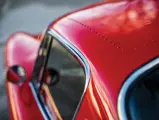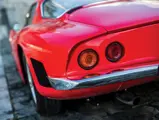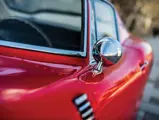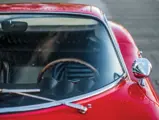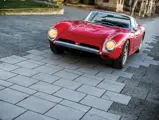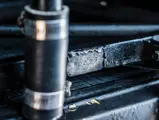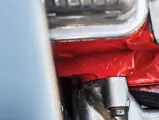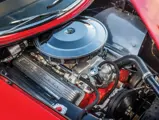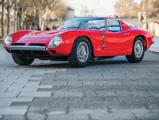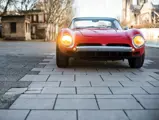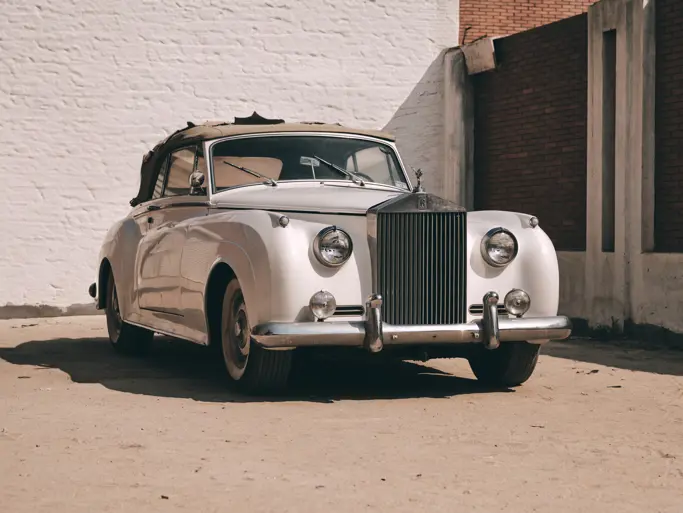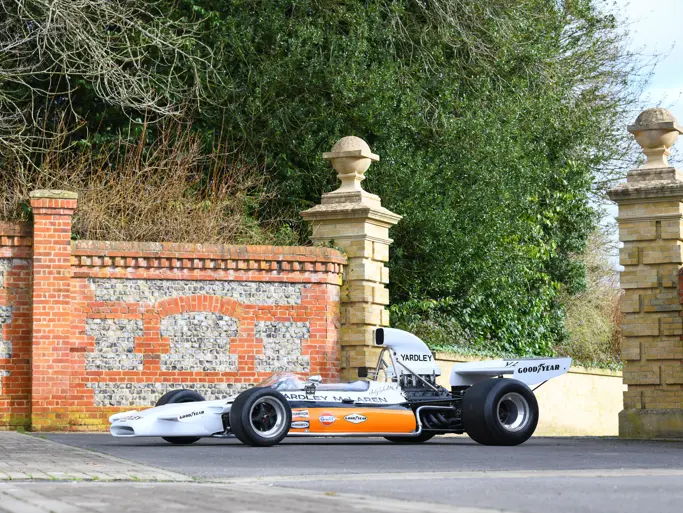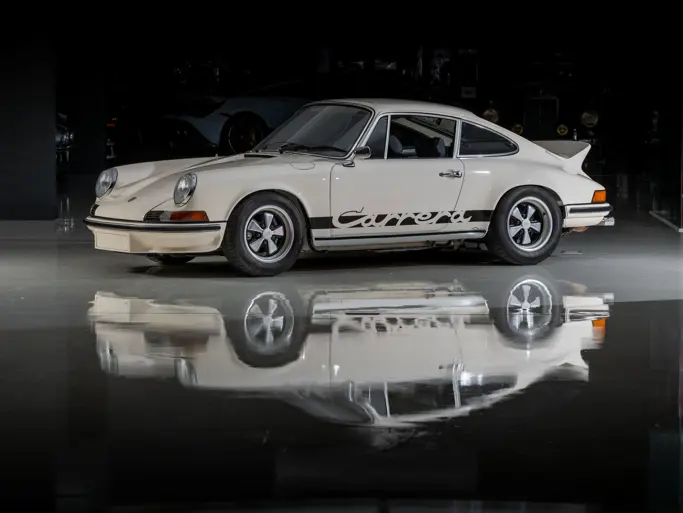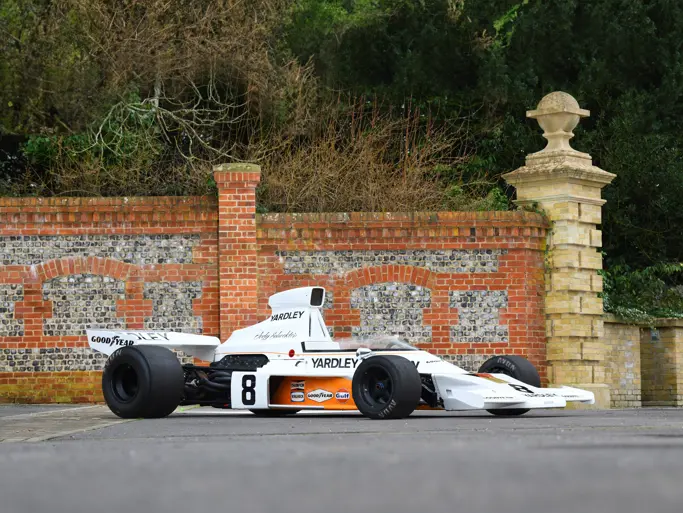Paris 2018
1965 Iso Grifo A3/C
Formerly owned by Johnny Hallyday
{{lr.item.text}}
€2,500,000 - €3,000,000 EUR | Not Sold
 | Paris, France
| Paris, France
{{internetCurrentBid}}
{{internetTimeLeft}}

- Formerly owned by Jean-Philippe Smet aka Johnny Hallyday
- Highly desirable 'riveted' Grifo A3/C; the eighth of 10 such examples built for 1964
- Known history from new; believed to have less than 27,000 km
- Retains its original interior
- Ancienne voiture de Jean-Philippe Smet, alias Johnny Hallyday
- La huitième de dix Grifo A3/C rivetées produites en 1964
- Historique connu depuis l'origine, sans doute moins de 27 000 km d'origine
- Intérieur d'origine
Giotto Bizzarrini’s exceptional career started at Alfa Romeo, but Ferrari is where he made his name, developing the 250 SWB, 250 TR and the legendary 250 GTO. Departing Ferrari as part of the infamous ‘Palace Revolt’ in 1961, he was soon involved with upstart ATS and later designed Lamborghini’s V-12.
Bizzarrini worked closely with Renzo Rivolta’s ambitious Iso effort starting in 1962 and later became a constructor of note. At 1963’s Turin Auto Show, Iso debuted the Grifo in two forms: the A3/L as a luxurious GT, and the A3/C as a serious endurance racer. The latter was developed and built by Bizzarrini; as he told author Winston Goodfellow, ‘I started with the idea of Ferrari’s 250 GTO, and wanted to improve on it.’ Iso Grifo A3/Cs won their class at Le Mans in 1964 and 1965, while the road-going A3 Stradale had a quoted top speed of 171 mph in Autosport magazine’s 1964 road test.
Offered here is one of these rare and very desirable ‘riveted’ A3/Cs, made by Carrozzeria Sports Cars of Piero Drogo in via Emilia Ovest in Modena, in front of the Autodromo di Modena. The bodies were made in ‘avional’ (duralumin), a special alloy of aluminium, copper and magnesium that is very light and elastic but very difficult to weld. Therefore, it needed to be riveted in a similar fashion to an airplane. This style of construction allowed the car to be exceptionally light, tipping the scales at 969 kg. Once the chassis and body were completed, Bizzarrini completed the cars at his small Autostar facility in Livorno.
The eighth of the 10 produced in 1964, Bizzarrini’s period correspondence with coachbuilder Piero Drogo summarized in Goodfellow’s book Bizzarrini: A Technician Devoted to Motor-Racing shows B 0209 under construction in September, with delivery to its first owner in France in November. It was finished in dark red over black leather seats.
It was sold to Paris resident Jean-Philippe Smet, who was better known as Johnny Hallyday. Dubbed ‘the Elvis Presley of France’ by The New York Times, Hallyday had 100-plus million record sales and appeared in more than 30 films, and was nothing short of a hero to many. Hallyday is pictured in and around the car, with Parisian temporary registration 7381 WW 75, in Paris, France, in late 1964/early 1965. On 27 October 1965, the car was registered as 4958 RZ 75, under ‘Mr Smet dit Johnny Hallyday, Jean Philippe, née le 15 juin 1943 à Paris 9è, et résident au 6 Place Winston Churchill, Neuilly sur Seine.’
After Hallyday’s ownership, B 0209 went to Jean Claude Guillaume in February 1966, and then the Grand Garage Moliere in November 1966 before settling into over two decades of ownership by Pierre Sangusko starting on 19 August 1968. According to the car’s current owner, Prince Pierre Sangusko stored the Iso in his castle for 24 years. During this period the car was refinished in white, with a central blue stripe. When he died, Daniel Marin, President of Ferrari France Pozzi, who was a very close friend of Pierre Sangusko, sold the Iso to Michel Hommell on 13 April 1992. He got the car re-sprayed in ‘Ferrari Red’ and displayed the car in his museum, Manoire de l’Automobile in Loéhac, Brittany, France. At that time the car was displayed with the number plate 728 GFS 75, even though it has never been registered with this number.
In 2009, Hommell sold B 0209 to Yvan Mahe, the owner of Equipe Europe. Before the sale, as per French regulation, a Contrôle Technique (equivalent to the UK MoT, and German TÜV) was performed on 21 February 2009, and at that time the car displayed only 25,484 km, believed to be original. It was then registered 214 EYC 77. Still retaining its original interior, it was bought by Pascal Perrier in 2012 before its acquisition by the current owner in 2014. At the 2017 Chantilly Concours, it was exhibited in the Great Musicians’ Cars class, where it garnered the ‘Special Award.’
Today, these early ‘riveted’ Iso Grifo A3/Cs are highly coveted as only a handful did actually survive and seldom come to market. Chassis number B 0209 is especially appealing as it has always been in France, with unbroken provenance back to the first owner, one of France’s most beloved figures.
La carrière exceptionnelle de Giotto Bizzarrini a commencé chez Alfa Romeo, mais c'est chez Ferrari qu'il s'est fait un nom en mettant au point les 250 GT châssis court, 250 Tour de France et la légendaire 250 GTO. Ayant quitté Ferrari à la suite de la célèbre "Révolution de Palais" de 1961, il s'est ensuite impliqué dans la marque naissante ATS et, par la suite, a contribué à la conception du V12 Lamborghini.
Bizzarrini a étroitement collaboré avec Renzo Rivolta lors du lancement en 1962 de la marque Iso, avant de devenir lui-même constructeur automobile. Au Salon de Turin de 1963, Iso présentait la Grifo sous deux formes : l'A3/L, une luxueuse GT, et l'A3/C, une machine d'endurance beaucoup plus sportive. La deuxième avait été conçue par Bizzarrini, qui s'occupait aussi de la production, comme il l'a expliqué à l'auteur Winston Goodfellow : "Je suis parti de l'idée de la Ferrari 250 GTO, et j'ai voulu l'améliorer." Les Iso A3/C ont remporté leur catégorie aux 24 Heures du Mans 1964 et 1965, alors que l'A3 Stradale de route était chronométrée à 275 km/h dans un essai du magazine Autosport, en 1964.
Celle que nous proposons ici est une très rare et désirable A3/C "rivetée", fabriquée par la Carrozzeria Sports Cars de Piero Drogo, via Emilia Ovest à Modène, en face de l'Autodrome de Modène. Les carrosseries étaient constituées d'"avional" (duralumin), un alliage spécial d'aluminium, de cuivre et de magnésium, très léger et élastique mais très difficile à souder. Par conséquent, il était nécessaire d'assembler les panneaux par rivetage, de la même façon que sur un avion. Ce style de fabrication permettait à la voiture d'être exceptionnellement légère, avec un poids de 969 kg. Une fois le châssis et la carrosserie assemblés, Bizzarrini terminait la voiture dans son atelier Autostar, à Livorno.
Il s'agit du huitième exemplaire de dix produits en 1964, et la correspondance de Bizzarrini avec le carrossier Drogo est résumée dans le livre de Goodfellow, Bizzarrini: A Technician Devoted to Motor-Racing. La voiture portant le numéro de châssis B 0209 y apparaît en cours de fabrication en septembre, avant la livraison en France à son premier propriétaire, en novembre. Elle était de teinte rouge foncé, avec sièges en cuir noir.
Elle était vendue à Jean-Philippe Smet, plus connu sous le nom de Johnny Hallyday. Surnommé le "Elvis Presley français" par le The New York Times, Johnny Hallyday a vendu plus de 100 millions de disques, il est apparu dans plus de 30 films et, pour beaucoup, il était plus qu'un héros. Certaines photos de fin 1964/début 1965 le montrent dans et à côté de la voiture, qui affiche alors son immatriculation parisienne provisoire, 7381 WW 75. Le 27 octobre 1965, l'Iso était immatriculée 4958 RZ 75 sous le nom de "M. Smet, dit Johnny Hallyday, Jean-Philippe, né le 15 juin 1943 à Paris 9è, et résident au 6 Place Winston Churchill, Neuilly-sur-Seine."
Après avoir appartenu au chanteur français, B 0209 était vendue en février 1966 à Jean-Claude Guillaume, puis cédée en novembre 1966 au Grand Garage Molière. Elle passait ensuite, à partir du 19 août 1968, plus de 20 ans entre les mains de Pierre Sangusko. D'après l'actuel propriétaire, le prince Pierre Sangusko entreposait l'Iso dans son château pendant 24 ans et, au cours de cette période, elle était repeinte en blanc, avec une bande bleue centrale. Après son décès, Daniel Marin, directeur de Ferrari France (Pozzi), ami proche de Pierre Sangusko, cédait l'Iso le 13 avril 1992 à Michel Hommell. Celui-ci la faisait repeindre en "rouge Ferrari" et l'exposait dans son musée, le Manoir de l’Automobile, à Lohéac, en Bretagne. A cette époque, la voiture était exposée sous le numéro 728 GFS 75, même s'il ne correspond à aucune de ses immatriculations.
En 2009, Michel Hommell vendait la voiture à Yvan Mahé, propriétaire de l'entreprise de restauration et préparation Équipe Europe. Avant la vente, un contrôle technique était effectué le 21 février 2009 et la voiture n'affichait alors que 25 484 km, très probablement d'origine. Elle recevait alors l'immatriculation 214 EYC 77. Toujours équipée de son intérieur d'origine, elle était achetée en 2012 par Pascal Perrier avant d'être acquise en 2014 par son actuel propriétaire. Au concours d'élégance de Chantilly 2017, elle était exposée dans la catégorie "Voitures de grands musiciens", et elle y remportait le "Prix Spécial".
Aujourd'hui, ces Iso Grifo A3/C "rivetées" des débuts sont extrêmement recherchées et seule une poignée d'entre elles ont survécu. Elles arrivent donc très rarement sur le marché. Cette voiture, châssis B 0209, est particulièrement désirable car elle est basée en France depuis l'origine, et son historique est connu de façon ininterrompue depuis son premier propriétaire, une des stars les plus populaires de France.

